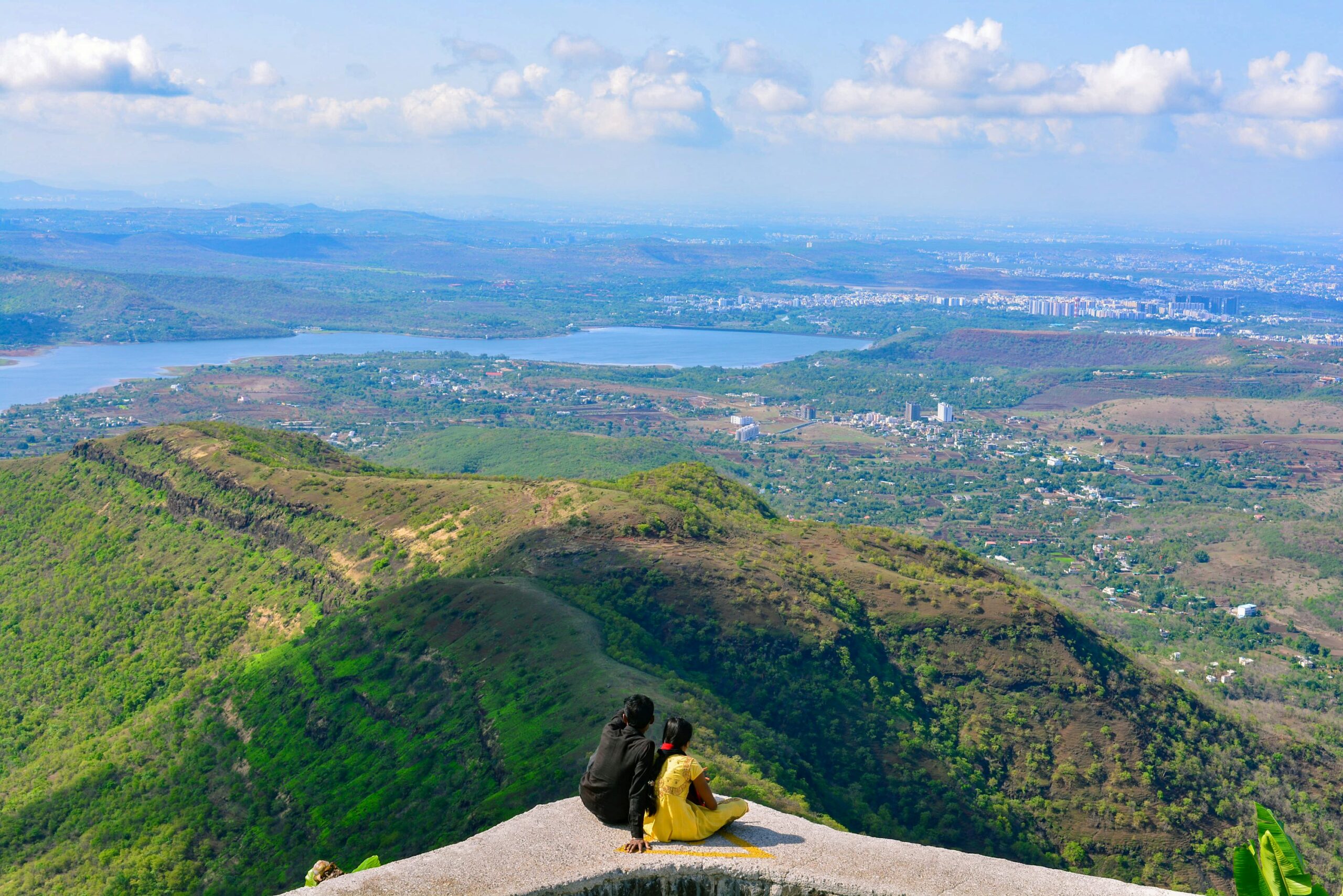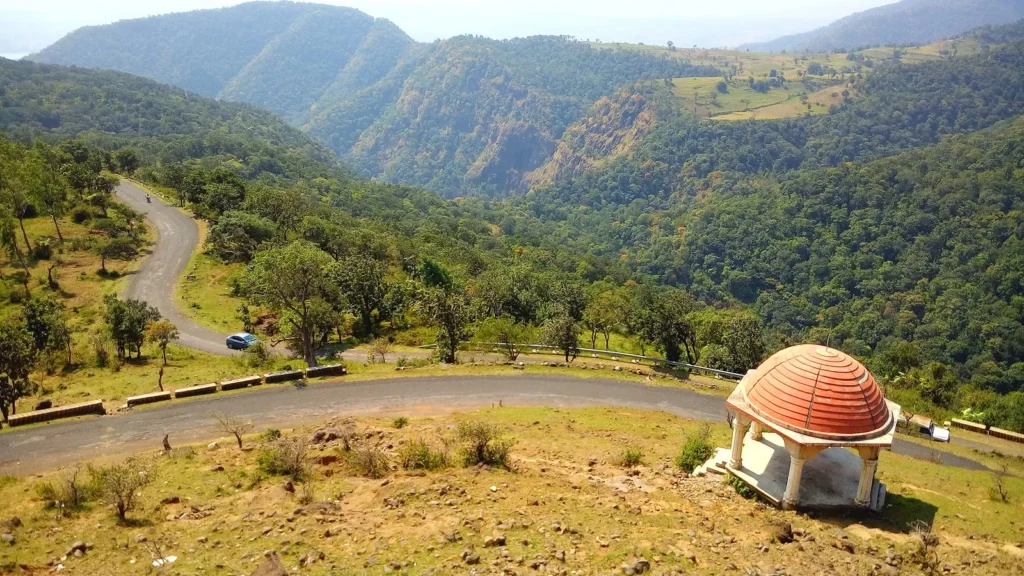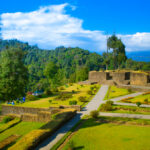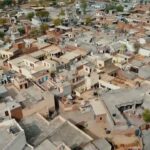Now Reading: Top 10 Best Places to Visit in Beed for History, Nature & Spirituality
-
01
Top 10 Best Places to Visit in Beed for History, Nature & Spirituality

Top 10 Best Places to Visit in Beed for History, Nature & Spirituality
1. Kankaleshwar Temple

The holy Kankaleshwar Temple stands as a Shiva temple at the heart of an 84 meter square lake situated in Beed within Maharashtra state of India. Kankaleshwar Temple exists along the banks of the river Bindusara at a 1.52-meter elevation. The government must address the growing pollution of the temple region because the administration remains careless about its maintenance.
Temple Structure
All structures of Kankaleshwar temple align east-west direction with a mukhpandap at the front and an ardhamandap behind it and a three-sided Talvinyas space which leads to the main sanctum. Every available sanctum sanctorum of similar dimensions displays star-based Talvinyas at all location. An octagonal structure defines the mandap of this temple. The mandapa contains two support points or two pillars which stand on each of its four main directions and four upadishas. A domed roof covers sixteen columns throughout the structure. Each circular ring section of the roof gets narrower in size towards its edges. Ornaments together with flower designs decorate the ceiling. A lotus design stands in the middle point of the roof.
At the base of every mandapa pillar stands as a square formation until you rise above where you encounter octagonal followed by square and circular forms until reaching the kickahast ornament placed on the circular segment.
Various layers form the temple exterior while base carvings decorate the lowest layer and kirtimukha carvings appear on the uppermost layer. The shrines on the bhadra of the outer part of the temple house Shakti, Brahma and the deities of the Shiva sect. The ten incarnations of Vishnu with Ashta-Dikpala decorations appear above the thigh portion of Mandovar.
An entrance with Panchashaka design leads to the inner sanctum of Kankaleshwar temple and includes decorations with lotus flowers and vyala.
About the Temple
This temple was constructed during the 10th to 11th century by the Chalukya King Vikramaditya (VI). This is a Dashavatari temple. During the Chalukya period women actively took part in military engagements. The temple contains a statue depicting women involved in combat. The temple preserves characteristics from Greek sculpture. Among its sculptures lie the representations of the two Jain Tirthankaras named Aryanath and Neminath. Two sanctuaries exist in this temple structure which takes the form of a starfish and is located under the temple roof. The establishment remains inactive after a five hundred year period. After many years the Kankaleshwar temple remained sealed. There was a khanqah. The Nizam’s cabinet established a prohibition on both the Mahashivratri fair as well as the celebrations. The Nizam implemented a government order which appointed Shambuwa Pathak as the temple priest in order to oversee worship services. Breaking this deadlock happened in the year 1915. Revolutionary Purushottam Godse succeeded in consecrating the Kankaleshwar temple Pindi by avoiding Nizam begging and crossing through police barriers. The true liberation of this temple occurred on September 17th 1948 which marked the day of Hyderabad Independence. The myth tells how Brahma-Vishnu-Mahesha grew pleased with the temple. A depiction of Nidhi and dasi holds kumbh and chauri which appears in the lower section of these dvarshakhas. A Ganesha statue appears on the foremost entrance of the principal sacred chamber.
- Address : Kankaleshwar Temple, Tt. Beed, Distt. Beed. 431122
- Dhule-Solapur National Highway No. 211
2. Sautada Falls

Sautada exists within Patoda taluka featuring a well-known waterfall which drops from Vincharana river. The Vincharana river begins within Patoda taluka’s hilly region before dropping seventy meters from the height at Sautada. The waterfall here is famous.
Lord Rama together with Sita established a Mahadev temple inside this valley. Rameshwar stands as the title for this temple located there.
The Shravan monsoon shower presents the spectacular appearance of a lovely waterfall plunging onto the river as the tide rises. The beautiful ancient Hemadpanthi Mahadeva temple at Sautada Rameshwar which locals call Mahabaleshwar in Marathwada needs to be experienced because it stands alongside a deep valley which receives a massive waterfall from a great height. Visiting this location at least once becomes a must because the natural treasures emerge with greater intensity during the monsoon season.
Rameshwar Sautada constitutes one of the first villages in Beed district located near Nagar Beed Highway. A supernatural natural wonder exists because of the deep valley where the waterfall plunges from its height. A distinctive feature of this site consists of numerous small and large waterfalls supplementing the giant main waterfall while the entire grounds remain covered with rich green shaloo and applauded by melodious songs from the small and large streams. The establishment brings happiness and relief to mental processes. Valuable peace descends on the mind whenever we listen to the combination of small and big waterfalls. I have prepared a brief video collection featuring the multiple small waterfalls which I have shared with you. Watch the video to enjoy a wonderful natural outdoor excursion.
The temple can be found at Shri Kshetra Rameshwar Mandir along the Jamkhed-Beed Road in Sautada town within Patoda Township of Beed District.
Seven kilometers from Jamkhed on Jamkhed-Beed Road
3. Naigaon Sanctuary

People visit Naigaon Sanctuary particularly to witness the famous Indian national bird the peacock inside Patoda taluk of Beed district.
The woodland within Mayur Sanctuary of Naigaon exists in two forests types which include subtropical dry deciduous alongside thorny forest. This area has received multiple tree plantations from the Regional Forest Department on approximately 1200 hectares of land. Within Naigaon Sanctuary residents can observe both peacock as well as various wild animals including deer wolf jackal wild cat antelope and rabbit. The sanctuary features greater than one hundred bird species within its boundaries.
The administration center of Naigaon Sanctuary operates from Beed where this sanctuary stretches across 20 km following the Beed-Patoda-Ahmednagar road path. The Construction Department operates two Rest Houses located at Naigaon. He booked his reservation at the office of the Executive Engineer within the Public Works Department building in Beed. Other accommodation options are unavailable at this site however people can access numerous private accommodation facilities through Beed city near the area.
4. Elephant Caves

The Hindu Shiva Caves exist as Jogai Mandapa and Hattikhana structures within the town of Ambajogai in District Beed which is part of Maharashtra state. The Paramara dynasty king Udayaditya (who reigned from 1060 to 1087 AD) had his artists construct the hilltop caves through rock carving activities during his Malwa Province rule. The Hindu cave contains both religious artwork and sculptures that illustrate scenes from the Hindu religious text Puranas as well as dedications to Shiva along with Nandi and Ganesha and different deities.
The Archaeological Survey of India classifies the sculptures together with inscriptions at these sites as being the finest surviving works of Indian art.
Shiva caves operate as important elements of heritage sites which the Archaeological Survey Department maintains. The Maharashtra Archeology Department implements protection of the site through its status as a recorded monument in the “List of Protected Monuments in the State of Maharashtra” under the Maharashtra Antiquities and Archaeological Sites and Existence Act, 1960.
The best time of the year
All around the year
People visiting the site can arrive anytime throughout the day. A complete introduction about this site can be found on the external information board.
Visitors can explore this site anytime because it lacks specific periodicity.
There is no such day
Special instructions for tourists
The establishment lacked wall structures at this elephant farm stage. The Archeological Department created protection through wall construction here about fifteen years back. Visitors will understand the value of this elephant house together with the carved idols only by experiencing it firsthand. On the other side of this area visitors can observe a second smaller elephant habitat. Multiple stone caves can be found in the solid rock structure.
5. Dharur Fort

The town of Dharur holds significant position in Beed district. Dating back to the Satavahana period Dharur achieved its fame as a successful trade hub. During the Rashtrakuta era officials erected the protection structure Mahadurga to defend the city. The additional rulers constructed new sections inside the fort and fortified the defenses following their modifications. Until independence Dharur fort remained under the governance of the Nizam of Hyderabad. Due to its well-preserved state the fort together with its ruins remains visible until this day.
A one-day excursion leads visitors to Abejogai temple, caves, Dharmapuri fort followed by a stop at the ancient Kedareshwar temple when people have their own daily time.
History :
The Satavahana kings stationed their ruling seat at Pratishthan which was later known as Paithan. All roads in the state lead to the capital. The market in Dharur village thrived because of this situation. The fortress of Dharur emerged when the Rashtrakuta dynasty ruled this particular region during the later period. The fort had its historical name as “Mahadurg” at this time period. During that period people built the fortifications by stacking simple stones one on top of another. Rashtrakuta king Govinda (III) included Dharur in his 793-814 AD grant deed. Until the end Chalukya (Kalyani) as well as Yadav of Devagiri controlled this area.
During the Bahmani period following the demise of the Yadava rule Dharur became an important commercial hub. History records that on September 22nd of 1422 Mahamadshah Bahamani moved his government from Gulbarga to establish Bidar as his new capital. The status of Udgir improved when Bidar became the capital during that time. The Bahmani kingdom splitted into five Shahya states following the year 1526 AD. Subhedar Kasim Barid of Ausa built Baridshahi as the ruler of the province. All major strongholds of Baridshahi with Bidar serving as its principal city included Dharur and Udgir and Ausa and Kandahar. The territorial domain of Baridshahi extended between the neighboring domains ruled by Adilshahi, Nizamshahi and Qutbshahi. Barid Shahi suffered multiple attempts at destruction from the three shahis during that period. These strong fortifications became central to numerous fights in the times that followed.
Multiple conflicts took place between Adilshahi and Nizamshahi following Baridshahi’s demise to determine the control of this area. Theo found Dharur fort crucial for its strategic position during that time and founded the new fort structure in 1567 AD which stands as Dharur’s current fort. Kishwar Khan’s standing rose significantly in the Adil Shah court because of building Dharur fort. More opponents who presented an internal danger arose with the completion of Dharur fort. The Nizamshahi gained power from the construction activities of Dharur fort. He deployed his army for a total invasion of Dharur. Fifty-hundred soldiers defended the fort at this time. Adil Shah granted Kumak to Kishwar Khan upon her request. The internal enemies of Kishwarkhana arranged for rescue assistance which never reached in time. In 977 Hijri (1569 AD) Murtuja Nizamshah of Ahmednagar executed Kishwar Khan before he seized Dharur fort and renamed it as “Fatehbad”. The Mughals seized Ahmednagar territory in 1601 which initiated the downfall of Nizamshahi. During the period of AD 1630-31 General Azam Khan of Shah Jahan succeeded in capturing Dharur fort. Gold minting occurred to mark the accomplishment in this battle. For a hundred years between 1028 to 1131 Hijri Fatehbad Fort operated its mint to produce coins.
Urza Palkar moved into Mughal service after Panhala Conflict led to his falling out with Shivaji Maharaj. According to historical records Netaji Palkar resided in Dharur fort later on. antroji Maharaj ran away from Agra forcing Aurangzeb to have Jai Singh bring Netaji Palkar into custody at Dharur fort.
At Udgir in AD. On February 3rd 1760 the Marathas engaged in combat with the Nizam near Udgir. Sadashivarao (Bhau) Peshwa conducted this conflict. Many sardars including Momin Khan and Sultanji Nimbalkar together with Lakshmanrao Khandagale departed from Aurangabad to assist the Nizam using a 15 thousand strong army. The pursuit by Sadashivrao (brother) Peshwa of Ranoji Gaikwad forced the latter to find refuge at Dharur Fort where he became trapped. The Marathas delivered a total victory against the Nizam throughout the battle. The Nizam ran away from the enemy capture by moving through Ausa towards Dharur. Following the Khardya battle on March 11th 1795 the Marathas held control over Dharur Fort for a brief period. The Nizam subsequently took control of this fort after its initial capture. Dharur fort remained under Nizam control before the merger of Hyderabad state into India during post-independence.
Places to see :
A car route leads straight from Dharur village to the fort. The village location at the same level as the fort leads to its Bhuikot name yet the three unconnected sides exhibit steep valley drops making natural protection possible. The fort derives its protection from natural geographic aspects because three of its sides span valley regions. The fort obtains protection from a dug trench which spans 4.2 meters wide and reaches 4.5 meters deep on its fourth side confronting the village. The fortifications around the valley span from both sides of the hill structure. The bottom edge of the valley holds a wall which directs the water flow into the ditch. North of this ditch
6. Famous Kapildhar Dhabdhaba

The religious destination Srikeshtra Kapildhar maintains its position in Beed district of Maharashtra state. A five-day religious journey takes place at this site during Tulsi vivah celebrations. Manjarsumbha rests 19 km south of Beed city while one and half kilometers distant from the settlement leads to a waterfall dropping ten meters into a valley containing petite hills. The area features the Kapildhar waterfall located in its vicinity. The community of Manjarsubha exists within Beed taluka. Facade, two holy sites of Beed and Ahmednagar and Osmanabad as well as Ambejogais link up at this location.
Veerashaiva community considers Kapildhar area in Beed taluka to be their spiritual center. Visitors can find Sanjivan Samadhi of Manmath Swamy at this location. Many rivers along with streams in the district have begun overflowing since July’s start due to recurring rain. Naturland’s beauty expands through the flowing waterfalls that appear within this area. Tourists and devotees gather at this destination since the Kapildhar waterfall drops from a tall section. Many visitors from Beed district together with people from outside regions are now visiting this waterfall which descends from steep elevation into the valley area.
Kapildhar stands as a religious Veerashaiva community site located within Maharashtra state. A Sanjivani Samadhi dedicated to Saint Shiromani Manmathswamy is situated at this location. This Samadhi has completed 459 years. The waterfall here brings visitors to notice its existence. The tourism department awarded this destination with the status ‘B’. Many visitors frequent this destination specifically during the month of monsoon. Swami hails from Ningur. The resident mother Parvati gave birth to Manmath Swami while he resided within Shivalinga Swami. Manmath Swami finished his educational training under Basavaraj Shivacharya Maharaj at Manoor Math. Swami introduced Veerashaivism throughout the territorial states of Maharashtra as well as Andhra and Karnataka.
Yatra in the month of Shravan
The religious festival at this location occurs during Kartiki Poornima. Thousands of worshippers from Maharashtra and Karnataka together with Andhra Pradesh residents assemble at this place for its annual celebration. The birth celebration of Swami takes place during Magh Suddha Panchami. Samadhi takes place on the celebration of Phalgun Chaturthi. Frequent religious pilgrimage events take place at this site for its third Monday celebration during the month of Shravan.
Temple Routine
Cultural performances begin at 5 am when believers can conduct their devotional visit to the temple. The morning activity of Mahapuja takes place before everything else. During Mahapuja there is Mahabhog. The ritual offering at the temple includes both Srifal and rice Sadana. Aarti takes place at 12 noon. A total of thirty-five to forty kilograms of rice serves as sacrificial gifts to the temple visitors. The temple conducted Shivpat along with Shiva Bhajan between 5 until 7 in the evening. The temple operates for visiting devotees during the hours of 5 am to 10 pm.
How to reach the temple
The Kapildhar Devasthan temple stands at the entrance of Manjarsumba Ghat while being adjacent to the Dhule Solapur State Highway. Travelers from Mumbai can reach the temple by covering 470 kilometers as the main distance. From Pune the distance to reach this temple amounts to 320 kilometers. Travelers coming from Aurangabad need to travel 170 kilometers to reach the destination.
related articles : Top 5 Best Places to Visit in Amravati for Nature, History & Spirituality



























